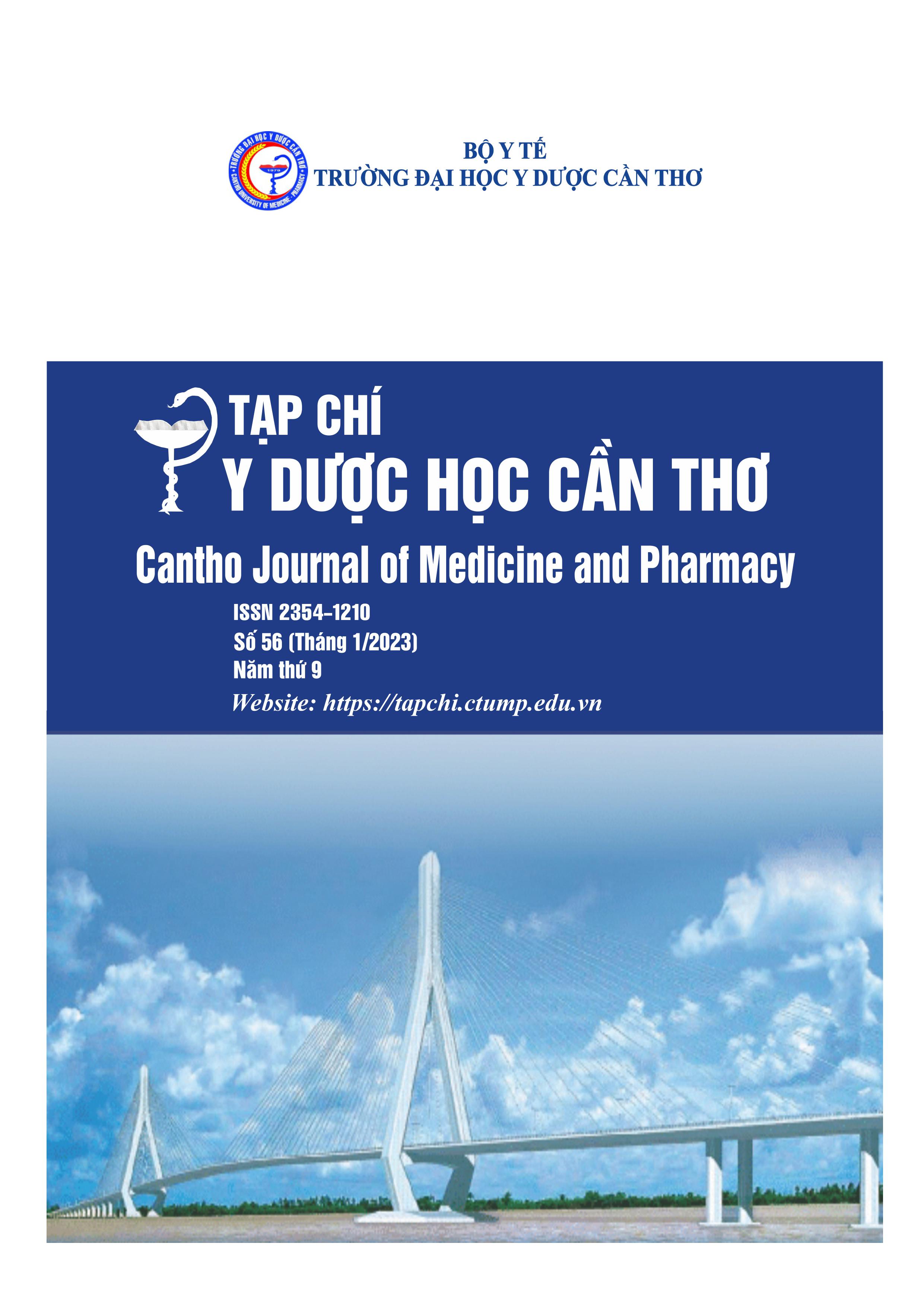CLINICAL, PARACLINICAL CHARACTERISTICS AND TREATMENT RESULTS OF METABOLIC ACIDOSIS IN 2 MONTHS OLD TO 15 YEARS OLD TREATED IN THE INTENSIVE CARE UNIT AT CAN THO CHILDREN'S HOSPITAL FORM 2021-2022
Main Article Content
Abstract
Background: Metabolic acidosis is very common in critically ill pediatric patients, demonstrating the poor response to treatment in the pediatric population. Objectives:(1) Describe clinical and subclinical characteristics, (2) describe the results of treatment for metabolic acidosis of children treated in the Intensive Care Unit at Can Tho Children's Hospital. Materials and methods: Retrospective study on 39 children diagnosed with metabolic acidosis treated at the Intensive Care Unit at Can Tho Children's Hospital. Results: The prevalence of metabolic acidosis was 10.4%, the mean age was: 2.76±3.52. Clinical characteristics: The percentage of children with cognitive disorders, changes in breathing rate, and heart rhythm disturbances accounted for 64.1%, 69.2%, and 61,5%, respectively. Subclinical characteristics: The percentage of children with pH<7.2 was 33.3%. A decrease in blood pH was related to disorders of organs such as nervous, cardiovascular, and respiratory organs. Treatment results: The sodium bicarbonate group had an improvement in pH, the rate of children with mechanical ventilation was 84.6%, the rate of children using vasopressors accounted for 69.2%, the mortality rate accounted for 74.4%. Conclusion: The rate of metabolic acidosis is 10.4%, the decrease in pH has an effect on the change of clinical symptoms, children with pH<7.2 is 33.3%.
Article Details
Keywords
Metabolic acidosis, children with metabolic acidosis, Can Tho Children's Hospital
References
2. Phan Việt Hưng, Đoàn Thị Kim Thoa (2014), Nghiên cứu đặc điểm lâm sàng, cận lâm sàng và kết quả xử trí toan hoá máu điều trị tại khoa Hồi sức cấp cứu Bệnh viện Nhi Đồng Cần Thơ, Luận văn tốt nghiệp y đa khoa, Trường Đại học Y Dược Cần Thơ.
3. Phí Đức Long, Phạm Văn Thắng (2004), Điều trị nhiễm toan ở trẻ em tại khoa hồi sức cấp cứu Bệnh viện Nhi Trung Ương, Tạp chí Y học, số 5, tr. 40-45.
4. Lê Phước Truyền (2020), Khí máu động mạch, Nhi khoa, 1, Nhà xuất bản Y học, Tp. Hồ Chí Minh, tr. 203-212.
5. Al-Jaghbeer M., Kellum J. A. (2015), Acid-base disturbances in intensive care patients: etiology, pathophysiology and treatment, Nephrol Dial Transplant, volume 30, No 7, pp. 1104-1111.
6. Alluru Reddi S. (2020), Acid–Base Disorders: General Considerations and Evaluation, AcidBase Disorders, Springer Cham, Newark, pp. 39-61.
7. Chisti M. J., Ahmed T., Ashraf H., et al. (2012), Clinical predictors and outcome of metabolic acidosis in under-five children admitted to an urban hospital in Bangladesh with diarrhea and pneumonia, PLoS One, volume 7, No 6, pp. e39164.
8. Jung B., Rimmele T., Le Goff C., et al. (2011), Severe metabolic or mixed acidemia on intensive care unit admission: incidence, prognosis and administration of buffer therapy. A prospective, multiple-center study, Crit Care, Volume 15, No 5, pp. R238.


